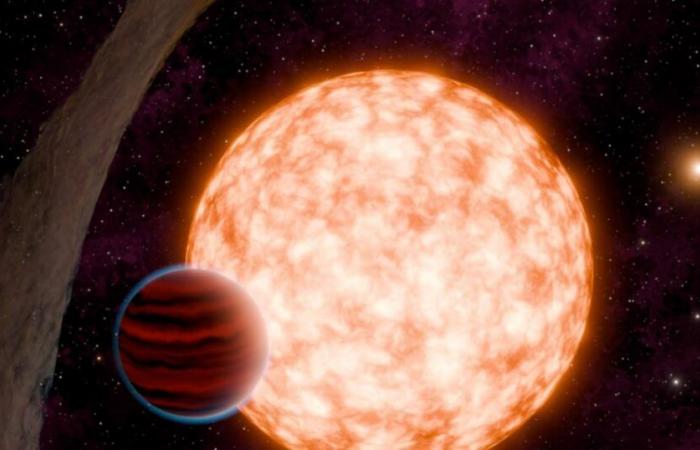DECRYPTION – A team of astronomers has revealed the existence of a system only three million years old, caught in a configuration that current models do not explain well.
If astronomers are interested in exoplanets, it is in particular because they hope, by studying their bestiary, to better understand the formation of our Solar System. To distinguish between what is random and makes it unique, and what is generic and could give hope that life could naturally have emerged elsewhere, through the same processes.
To date, just over 7,000 exoplanets have been identified, including a thousand multiple systems. If each discovery enriches our statistical knowledge, every new planet does not necessarily raise enormous interest for itself. « It obviously depends on the context, on the new satellites or instruments that come into service, but I would say that on average, we only have one object per year or so that stands out quite clearly from the others. »recalls Anne-Marie Lagrange, CNRS research director, professor attached to PSL (LESIA/Paris Observatory).
However, it is precisely an exceptional case of this type which has just been brought to light and is the subject of an article in the journal Nature : a planet discovered at a very early stage of its existence, only three million years old, and only 400 light years away (in the Taurus molecular cloud). It is a giant, located very close to its star (it completes a complete orbit in just nine days). The authors think that it could be a precursor of super-Earth or mini-Neptune, these intermediate-sized exoplanets, very common in the galaxy, but absent from our Solar System. Its name, derived from that of its star, is a little abstruse and probably deserves a diminutive: IRAS 04125+2902 b.
Many sightings to come
“The initial detection was carried out by NASA's Tess satellite, then it was confirmed by various ground observations”explains Xavier Bonfils, research fellow at the Grenoble Institute of Planetology and Astrophysics, who did not participate in this work. It was by passing in front of its star, thus slightly masking its brightness, that the planet betrayed its presence. « By observing at different wavelengths, it is possible to remove any ambiguity because the transit is always the same whatever the color, which would not be the case if the planet was a small star for example. »continues the researcher. « That's exactly what they did. The data is very convincing. » This was not obvious because the drop in luminosity is of the order of half a percent, while the star itself, as it is very young, experiences significant variations in its brightness (from order of ten percent).
This method of transits also makes it possible to estimate the size of the planet. Its current diameter is close to that of Jupiter (ten times that of Earth), but it has probably not finished evolving. This is what makes its study and observation so promising. “It is very interesting for us to have access to a planet so close to us at this moment in its existence, because we should be able to determine its composition by analyzing the way in which its atmosphere filters light”explains Xavier Bonfils. The James Webb space telescope should notably make it possible to find out more.
Disque orthogonal
But it will not be the only one mobilized. “A large number of ground observation programs will also be carried out”anticipates Anne-Marie Lagrange. “The priority will be to determine its mass. » In their study in Naturethe team led by astrophysicists from the University of North Carolina at Chapel Hill and MIT in Boston estimated an upper limit of 90 Earth masses (a third of the mass of Jupiter), but the data is still very uncertain on this point, analyzes Anne-Marie Lagrange, specialist in the method used (which consists of deducing from the changes in color of the star its movements back and forth caused by the gravitational attraction of the planet which revolves around it).
But beyond its record youth, there is yet another aspect that intrigues astrophysicist Alessandro Morbidelli, holder of the chair of planetology at the Collège de France and a leading specialist in the formation of planetary systems. “It's not really the age that matters, but the state of the system. In the case of the article, for example, the planet is in the central cavity of the disk. So she finished training. So even though she's young, it's already too late in a way. But the system is very strange and very intriguing…”
The main star does indeed have a companion, located much further than the planet. And, stuck between the planet and this companion, which both orbit in the same plane, a disk of gas and dust… in a quasi-orthogonal plane. “We frequently observe broken discs, with the external part and the internal part on two different planes. But in general the outer part is aligned with the orbital plane of the companion star. Here it is perpendicular. The authors don't understand it and neither do I! We will have to work to understand this unexpected configuration. »






